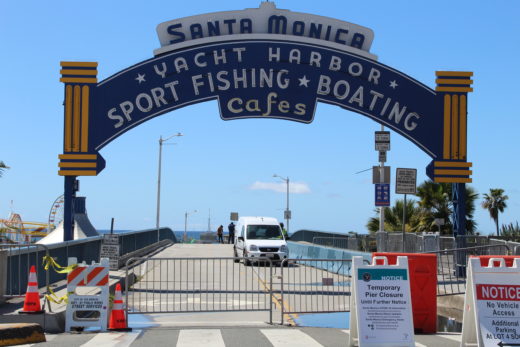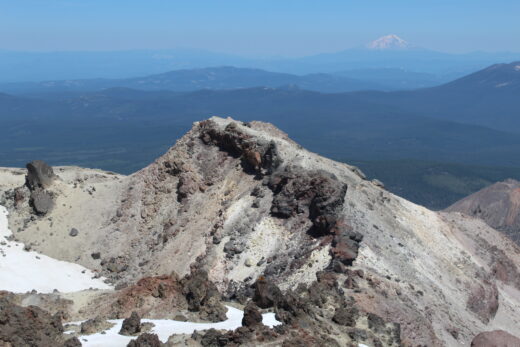One of our October 26, 2017 APCG field trips included a visit to the Feather River Fish Hatchery, one of the roughly twenty California Department of Fish and Wildlife hatcheries. As we toured the facility, we were lucky to witness their staff extracting eggs and milt from Chinook salmon that had returned to the Feather River watershed after 3-4 years living in the Pacific Ocean. This part of the fall run of Chinook salmon captured at the hatchery.
By the time they swim all the way up the river, they are already turning dark and decaying as they are ready to spawn and running out of energy after an extended period of fasting. Human obstructions on the river that include the nearby Oroville Dam block them from making it farther upstream, so they are helped to spawn here. After the salmon enter the trap, CO2 puts them to sleep. Once out of the trap, males and females are sorted and their egg sacks and milt are extracted. Approximately 7/10 eggs will survive here, compared to only about 1/10 in the wild ,where the female must drop her eggs in choice stream locations and the scent or hormone must attract the male to fertilize them in a tempest of environmental hazards and uncertainties. In contrast here, small fish are nurtured within their yolk sacs within the controlled environment of the hatchery.

These programs became necessary when salmon populations were decimated by a familiar list of human impacts that include water pollution, climate change, introduced non-natives, overfishing of dwindling species, and one of the greatest threats along this river: habitat destruction especially caused by dams. Members of this new generation of maturing salmon are eventually released back into the river, where they will swim out to the Pacific Ocean to live for 3-4 years until many will again return right back up the very stream courses where they were hatched. (Note that this 3-4 year period sets delays in the effects of annual changes such as drought and flood. For instance, the low numbers expected for 2017 and 2018 were in response to the record drought that had ravaged the state a few years earlier.)

It would be difficult to overestimate the importance of these specific efforts to save our state’s valuable waterways and fishing resources. Within our updated 4th edition, we survey (in Chapter 6) California’s water resources, the ecosystems that they shape, and the great water projects that have transformed many of these landscapes. We also (in Chapter 9) survey the state’s commercial fishing industry that totals hundreds of millions of dollars each year. We show how fishing organizations and their publications have used surveys by the U.S. Fish and Wildlife Service to underscore fishing’s importance. Using mapping and population software, they have estimated that about 2,800,000 anglers fishing in California spend about $2.4 billion supporting more than 35,000 jobs with a total economic impact of $4.6 billion in the state each year. This admittedly expanded multiplier effect considers manufacturers, boat builders, sales of fishing gear, and lodging and food services. The data prove that nurturing our waterways and fisheries is more than good environmental stewardship; it is essential to the long-term health of our economy and the health and quality of life for millions of Californians.

By March 2018, efforts to restore winter-run salmon were made public in the article with the link that follows. Though Battle Creek is north of the Feather River and Coleman Fish Hatchery is a national fish hatchery operated by the U.S. Department of Fish and Wildlife, the issues are hauntingly similar as various agencies and organizations must cooperate to solve these problems.
- One Step Closer to Reestablishing a New Population of Endangered Winter Run Salmon
- The Battle Creek Plan
- Visit the Feather River Fish Hatchery












